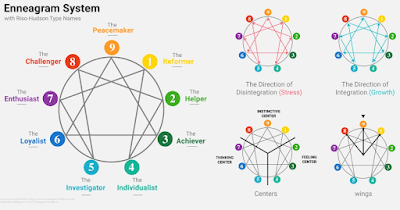
Sexuality, biological sex, and gender are the hot topics of the day, and unfortunately, nearly everyone has an over-simplified view of each topic. For this article, I’m only going to focus on biological sex, and for 99% of people reading this, my guess is that there’s a lot more to it than you realize. I have no intent to change anyone’s mind on any theological implications, but instead, I want to help people understand the topic so they can think more clearly, speak more intelligently, and be less insulting to people who don’t fit the standard categories.
When people talk about biological sex, they typically refer to what is considered “normal,” an XY male with a penis or an XX female with a vagina, but there’s more to it than that. As many as 1.7% of the population is intersex, or what is sometimes referred to as a disorder of sexual development (DSD), although some consider this term disrespectful (the term hermaphrodite is considered derogative, too). For comparison, that’s about the same percentage of the population that has red hair and blue eyes.
I am using the term intersex in the broadest sense, to refer to any instance where a person’s biology does not align with what is typically considered male or female. This is the best definition I’ve seen and comes from an 11-year-old intersex kid in this TED Talk.
One of the reasons people are not more aware of these differences is because many intersex people are unaware of it themselves. Many don’t find out until puberty or struggles with infertility, but some go their whole life without finding out. In these cases, only genetic testing could tell them they’re intersex.
Below is a list and brief description of the lesser-known variations of sex. As you read these, think about whether you would consider someone with such a condition a male or female, how should they describe their gender identity, and what does it mean for them to be homo- or heterosexual?
Sex Chromosomes: XO
(Turner syndrome (TS); 45,X; or 45,X0)
Females most commonly have two X chromosomes, but for women with Turner Syndrome, one or part of one of the sex chromosomes is missing. This affects about 1 in every 5,000 girls. Some people have no signs of it while others might be affected by various physical abnormalities such as a wide neck, low-set ears, heart abnormalities, delayed growth, and others.
Sex Chromosomes: XXX
(Triple X Syndrome; Trisomy X; or 47,XXX)
Just as some women can have only one X chromosome, a slightly more common variation (1 in 1,000) have three X chromosomes. Women with this genetic variation are at higher risk for behavioral problems, learning disabilities (e.g. ADHD), mental health problems, and some physical problems such as seizures, flat feet, and more. The symptoms are usually mild and often even non-existent.
Sex Chromosomes: XX
(XX Male Syndrome; 46,XX testicular disorder; XX sex reversal )
We all “know” that men have XY chromosomes and women have XX chromosomes, but about 1 in 20,000 people with a male appearance has two X chromosomes. They are usually shorter than the average male but look like a male in every way. They are infertile but otherwise, they usually have a normal functioning penis. Some will have smaller or undescended testes, a urethra hole on the underside of the penis, or ambiguous genitalia.
Sex Chromosomes: XY
(Swyer Syndrome; Gonadal Dysgenesis; 46,XY Complete Gonadal Dysgenesis (CGD); 46,XY Sex Reversal; XY Female Type)
About 1 in 80,000 people have Swyer syndrome, which is when someone looks like females and have female genitalia, but has XY chromosomes. Although they do not have ovaries, they can become pregnant and give birth via implantation. Most people with Swyer syndrome don’t have symptoms in childhood. The first sign is often that they don’t go through puberty or get a period, however, they can after hormone therapy.
Sex Chromosomes: XXY
(Klinefelter Syndrome (KS); 47,XXY Syndrome; XXY Syndrome; XXY Trisomy)
This is the most common variation, affecting about 1 in 650 newborn boys. Instead of copying an extra X chromosome as with XXX females, the extra chromosome copied is a Y. People with KS have few to no symptoms (estimates are that 75% of people with it never know). Individuals with this are often taller, but may have weaker muscles, decreased testosterone, delayed puberty, breast enlargement, small penis, undescended testes, and other related effects. As many as 10 percent of people with KS have autism.
Sex Chromosomes: XYY
(47,XYY Syndrome; Jacob’s Syndrome; XYY Karyotype; YY Syndrome)
About 1 in 1,000 boys are born with an extra Y chromosome. These males are typically taller than average and may have an enlarged head or teeth, flat feet, widely spaced eyes, or other physical effects, but many have no side-effects. They’re also at an increased risk of having ADHD, autism spectrum disorder, anxiety, and depression.
Sex Chromosomes: XXYY
(48,XXYY Syndrome; XXYY Syndrome)
This condition affects 1 in 18-40,000 newborn boys so they will have the appearance of males. People with it have an average height of 6’4″. Other symptoms include infertility, intellectual disabilities, decreased testosterone, reduced body hair, poor muscle development, breast enlargement.
Sex Chromosomes: XXXY
(48,XXXY Syndrome; XXXY Males; XXXY Syndrome)
People with this chromosomal condition look like males. They tend to be taller than average, but usually have less testosterone, which can lead to enlarged breasts, smaller penis, undescended testes, and incomplete puberty. They’re usually infertile and often have intellectual disabilities. This affects 1 in 17-50,000 newborn boys.
Sex Chromosomes: XXXXY
(49,XXXXY Syndrome; 49,XXXXY Chromosomal Anomaly; Chromosome XXXXY Syndrome; XXXXY Aneuploidy; XXXXY Syndrome)
This condition is sometimes called Klinefelter syndrome (see above) because it affects people similarly, but the effects are more severe and wide-ranging. It affects about 1 in 90,000 newborn boys so it’s quite rare. All known people with this condition are infertile
Sex Chromosomes: XXXYY
(49,XXXYY Syndrome; XXXYY Syndrome)
This is extremely rare, with only a handful of known cases. Some symptoms are severe intellectual disability, facial deformities, ambiguous genitalia, small penis or testes, enlarged (male) breasts, and more.
Sex Chromosomes: XXYYY
I couldn’t find much on this. I think this genetic arrangement is more theoretical than actual, but there is at least one known case of it. It is likely similar to the cases discussed above, but probably has more severe symptoms similar to XXXYY.
Clitoromegaly
This is an enlarged clitoris, which may not sound very severe, but in some cases, it can be so large it looks like a penis. This is a symptom of XX males and other conditions discussed in this article. The picture on the right was and is used to measure the clitoris/penis length to determine if a baby with ambiguous genitalia should have surgery to “fix” their genitals to look like a traditional male or female. This also essentially determines how they are raised.
Congenital Adrenal Hyperplasia (CAH)
(Subtypes: 21-hydroxylase deficiency (most common form); 11-beta-hydroxylase deficiency; 17-alpha-hydroxylase deficiency; 3-beta-hydroxysteroid dehydrogenase deficiency; Congenital adrenal hyperplasia due to cytochrome P450 oxidoreductase deficiency; Congenital lipoid adrenal hyperplasia )
This condition can affect males and females, but females usually experience more severe symptoms. It affects the production of three different hormones, one of which is the male sex hormone, androgen, which is why it relates to this article. It can cause either sex to have ambiguous genitalia. In less severe forms, males can a have small penis and testes and females can have an enlarged clitoris.
Androgen Insensitivity Syndrome (AIS)
(Androgen Receptor Deficiency, Androgen Resistance syndrome, AR Deficiency, Dihydrotestosterone Receptor (DHTR) Deficiency)
This is a rare condition (1 in 25-50,000) that affects sexual development before and after puberty in males. Their bodies do not respond to the male sex hormone, androgen, so they develop external female sex characteristics but have no uterus or ovaries and so they cannot give birth like XY females (see above). They are typically raised female and have a vagina. However, there is partial androgen insensitivity (Reifenstein Syndrome), which exists on a continuum and is less severe,. People with this could appear as male or female, but even when appearing as a male, they are usually infertile and tend to have enlarged breasts.
5-Alpha-Reductase Deficiency
(Familial Incomplete Male Pseudohermaphroditism (type 2), Pseudovaginal Perineoscrotal Hypospadias, PPSH)
This is similar to AIS (above), but instead of an insensitivity to androgen, it’s an insensitivity to the male hormone dihydrotestosterone (DHT). People born with this often have female genitalia at birth and are raised as females. However, they might also have ambiguous genitalia or a small penis. During puberty, increases in male hormones often gives the appearance of more male-like secondary sex characteristics (deeper voice, greater muscle mass, etc.) for those raised as females. Those raised as males will likely have decreased body and facial hair and will likely be infertile, at least without reproductive assistance. Most are raised females but many eventually adopt a male gender identity in adolescence.
Conclusion
This article merely laid out the biological facts, which is merely a starting point for talking about gender identity, and sexuality. In one study, over half (52%) of people with a disorder of sexual development identify as something other than heterosexual, which should cause us to think, what does it even mean for people with these genes to be heterosexual, homosexual, or other? Is an XX male a homosexual if he is attracted to XX females or XY males?
Even though intersex conditions are somewhat rare for the general population, intersex people may be a large percentage of people who are not heterosexual or identify with a different gender. I say it’s possible because there is limited research on this and what does exist shows a wide range of correlations between intersex, homosexuality, and gender dysphoria.
Hopefully, this gave you something to think about and has challenged you, at the very least, to be a little more careful and respectful about how you speak about sexuality, gender, and biological sex. If I said anything in this article in an offensive way, I apologize. I tried speaking respectfully, but I also tried using common language so people would get what I’m saying. If I failed at either one, please let me know.
References
I relied heavily on these websites for this information and would recommend you start there for further research.
Genetics Homs Reference
RareDiseases.info.nih.gov
National Organization for Rare Diseases (NORD)
Mayo Clinic
Here are some other useful resources. If you can’t access peer-reviewed journals through Google Scholar, trying using Sci-Hub.
APA.org article that gives a brief overview of some of these conditions
-Ahmed, S. F., Morrison, S., & Hughes, I. A. (2004). Intersex and gender assignment; the third way?. Archives of disease in childhood, 89(9), 847-850.
-Blackless, M., Charuvastra, A., Derryck, A., Fausto‐Sterling, A., Lauzanne, K., & Lee, E. (2000). How sexually dimorphic are we? Review and synthesis. American Journal of Human Biology: The Official Journal of the Human Biology Association, 12(2), 151-166.
-Furtado, P. S., Moraes, F., Lago, R., Barros, L. O., Toralles, M. B., & Barroso Jr, U. (2012). Gender dysphoria associated with disorders of sex development. Nature Reviews Urology, 9(11), 620.
-Jones, T., Hart, B., Carpenter, M., Ansara, G., Leonard, W., & Lucke, J. (2016). Intersex: Stories and statistics from Australia. Open Book Publishers.
-Jones, T. (2016). The needs of students with intersex variations. Sex Education, 16(6), 602-618.
-Meyer-Bahlburg, H. F. (1994). Intersexuality and the diagnosis of gender identity disorder. Archives of Sexual Behavior, 23(1), 21-40.
-Sax, L. (2002). How common is Intersex? A response to Anne Fausto‐Sterling. Journal of sex research, 39(3), 174-178.



